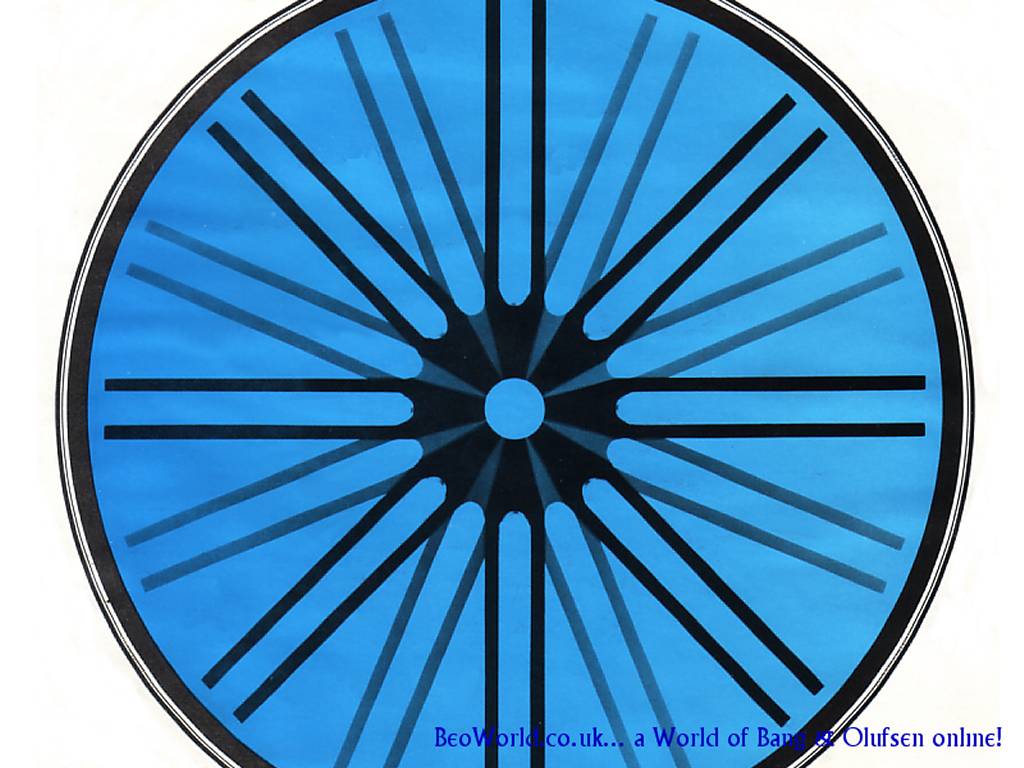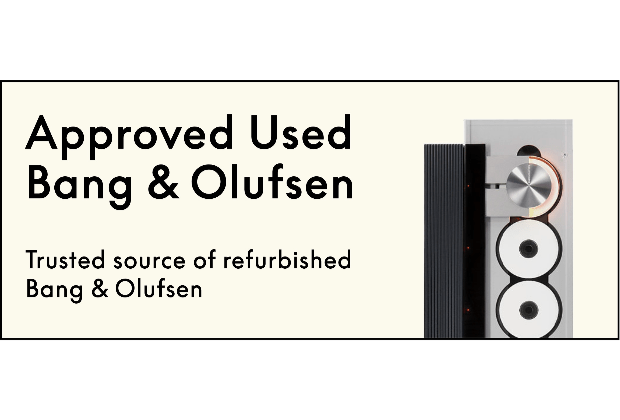Home › Forums › Product Discussion & Questions › BeoLab › BL50 and Core, please explain me :)
- This topic has 18 replies, 5 voices, and was last updated 2 years, 2 months ago by

-
AuthorPosts
-
12 October 2023 at 11:38 #49620
 GOLD Member
GOLD MemberHello Beoworlders,
I’ve read many threads stating that the overall performance of the Core is decieving and far beyond other brand’s products.
Music files are stored in a NAS running Twonky Server.
My recently installed BL50 are connected to a Core using the optical input.
I did this to have the digital signal decoded by the 50s with no other filter or alteration.
So, in which way the Core’s performance have impact on the sound quality?
Awaiting for your comments,
Yann.
Location: Brittany, France
My B&O Icons:











 12 October 2023 at 11:56 #49621
12 October 2023 at 11:56 #49621Sandyb
BRONZE MemberI don’t have any comments about Core sound quality.
But thats surely not the reason you got the Core?
I’m guessing you got it as something B&O which you could use to send music (streamed or network stored) to the 50s?
12 October 2023 at 13:37 #49622 GOLD Member
GOLD MemberYou are right, the Core replaced a few years ago a Moment used for playing music stored in the NAS and Net Radios to the rest of my setup (I was not confident in the Moment’s lifespan although it was a nice product).
I appreciate its integration in the B&O ecosystem (until the 5.4 version of the app).
Location: Brittany, France
My B&O Icons:











 12 October 2023 at 14:24 #49623
12 October 2023 at 14:24 #49623There are different opinions on this matter.
Personally I am one of those who without hesitation would recomment the Beosound Core…..especially if you use the digital output of it to connect to the digital-in of the 50’s – as in your case.
Different digital audio streamers may sound different – every company has some kind of signature to their products.
It will be very hard to compare these directly in real life, but only then you could find out, whether you’d prefer one over another.Some even prefer to use the analog out of a streamer, because of the flavouring, special filter settings (often called ‘quality’) of the DAC inside the specific product.
Then there is the aspect of the user interface (the looks and how easy it is do acchieve what you want) and the support for streaming services and file formats (maybe also considering ROON support).
This may be worth investigating.
Maybe even more for those who have a standalone setup with the 50’s or 90’s.Personally I would stick to the Core, if the Core also will be integrated in a B&O multiroom setup.
IMO the user interface (including the option of using the Beoremote) is also worth it, when deciding for the Core.From your other posts it seems that you – in addition to the NAS based files – use Tidal Connect, which nowadays is supported by the BS Core.
Why not just use the Core – since you already have it – to see, if you like it.
I’d also recomment using an iPad/Mini dedicated to the job.Should you want to do some experiments with other streamers, be prepared for some work – comparing streamers is troublesome.
And watch out for the experience of other beoworlders in a similar situation as you.MM
Location: Flensborg————Danmark
12 October 2023 at 15:53 #49624Sandyb
BRONZE MemberI’d add to (and in sprint agree with MM’s) post to your question.
You’ve only recently had your BL50s (if I remember right), so I’d certainly live with your Core based setup for a while.
If after a while there are aspects you are unhappy with, only then would I explore other options.
So yes, while I use a 3rd party input into my 50s, that choice was motivated by a few factors – a key factor being that I wanted to use Roon as my music interface, and was happy with the sound character of the Linn unit that I use (analogue DAC output).
It means my music (Roon interface controlled/managed) exists outside of the B&O ecosystem, even if it all comes out of B&O speakers.
But that hybrid setup is not going to suit everyone.
12 October 2023 at 15:59 #49625 GOLD Member
GOLD MemberThanks MM,
I agree with you for the benefits of the core in a extensive setup as mine (several rooms and products of all generations), because any product can reach the others in terms of content and control.
Especially with a NL/ML converter in the game.
In fact, I do not plan to remove it.
I don’t use Tidal, but Qobuz which is unfortunately not natively integrated in the app, as it has been done for Deezer.
I can understand that a streamer can have an impact of the sound for analog to digital conversion. But this is not my concern as all my music is stored as digital files and the Core is used as a hub for streaming and NAS access.
In a nutshell, the question is to know if the Core is perfectly transparent (or not) in a totally digital signal path.
Yann.
Location: Brittany, France
My B&O Icons:











 12 October 2023 at 16:12 #49626
12 October 2023 at 16:12 #49626 GOLD Member
GOLD MemberSandyb,
I do not plan to replace my Core for the reasons explained in my previous post.
But I want to get the best of my 50s.
So, if the Core has no impact on the digital flow send to the 50s, I’m happy with it.
But if there is an impact, I may think to an hybrid system as yours.
I tried Roon some time ago because it hosts Qobuz but did not keep it, as on long listening session the “more of the same” automatic playlist following an album was a bit boring.
Yann.
Location: Brittany, France
My B&O Icons:











 12 October 2023 at 16:38 #49627
12 October 2023 at 16:38 #49627In a nutshell, the question is to know if the Core is perfectly transparent (or not) in a totally digital signal path.
Bits are bits!
The big question is, what happens in the streamer before the data is handed out through the digital output?
I know of no tests on this with the Core.This will be very hard to find out – mainly because the companies probably keep their ‘special sauce’ secret……upsamplig, resampling etc etc.
Generally Archimago’s Musings is a great resource, if you want ‘a more objective and rational take’ on things……I searched for ‘DACS’ there.
MM
Location: Flensborg————Danmark
12 October 2023 at 16:48 #49628 GOLD Member
GOLD MemberBits are bits!
MM, that’s exactly what I think.
But so many people are stating that Core is easily blown away by such or such 3rd streamer that I would like to understand what happens to these poor 0s and 1s 🙂
Location: Brittany, France
My B&O Icons:











 12 October 2023 at 17:30 #49629
12 October 2023 at 17:30 #49629Sandyb
BRONZE MemberNot really sure what your question actually is then!?
Anyways, in the end if you’re happy with the Core, no reason to change.
Nothing anyone can write here will show or prove anything, and ultimately you’ll only know by testing things out in real life. And as I’m sure you know, the acoustics of your room `re a good deal more important than the merits of streamer x or y.
13 October 2023 at 07:40 #49630NQVHNWI
BRONZE MemberBits are bits!
MM, that’s exactly what I think. But so many people are stating that Core is easily blown away by such or such 3rd streamer that I would like to understand what happens to these poor 0s and 1s ?
That question has been answered by no less than Geoff Martin (who I know many of you value his opinion).
The answer is……bits are bits….and direct digital chain is always better……and……and….that it is fact that every digital music processor/playback device has its own filters which change the sound (and in many ways deletes bits too).
A good (or indeed very good) filter will cut off/filter noise in areas/frequencies in a sharp and relatively precise way. These “sharp” filters are usually more expensive to implement and one can argue whether the sound is better or worse.
It’s personal preference.
This is why some of us prefer the sound of using a 3rd party streamer/DAC feeding into the XLR/RCA analogue input of the BL90/50s (digital >> analogue >> digital >> analogue). There are extra pathways in the chain (especially D/A and A/D) but the perception is “better” or more preferable sound.
But no one should be under the impression that what you hear from the loudspeaker = the sound recorded on the disc/file = what the Sound engineer intended. Its just as corrupted as an analogue signal.
16 October 2023 at 07:42 #49631geoffmartin
BRONZE MemberHmmm… I’m reasonably certain that this is a paraphrased interpretation of an answer I gave to a different question, and that it might not necessarily be the answer to the question posed at the top of this thread.
Although an audio device might have a digital input (say, a file loaded from a hard drive or streamed from a service) and a digital output (say, an optical or coax connector with an LPCM stream in an S/PDIF protocol) there are many things that can happen digitally between those two points in the audio chain.
That said, anything that modifies the signal can be simplified under the umbrella term “filter” because it does something, audible or inaudible (depending on the signal, your playback system, your listening situation, and you) to the signal.
THAT said, I definitely made the comment about personal preference. Just because something is measurably “better” (e.g. more like the original – whatever that is/was) doesn’t necessarily mean that you’ll like it more. Better for you is not necessarily better for anyone else.
16 October 2023 at 11:37 #49632 GOLD Member
GOLD MemberTHAT said, I definitely made the comment about personal preference. Just because something is measurably “better” (e.g. more like the original – whatever that is/was) doesn’t necessarily mean that you’ll like it more. Better for you is not necessarily better for anyone else.
I admit that personal taste is a prominent element in the perception, which is source to endless debates.
My concern is to eliminate any digital “filter” bewteen NAS and BL50s, in order to have them in charge of the restitution of the digital signal. Is it impossible?
To Geoff:
I have a problem with my 50s, as they seem to be unable to play 192 kHz files from the coaxial input.
I noticed in the technical guide that specification, for that input, is stated “up to 192 kHz”, vs “up to and including 192 kHz” for USB Audio.
Should I understand that coaxial input does not support 192 kHz files?
Yann.
Location: Brittany, France
My B&O Icons:











 16 October 2023 at 13:13 #49633
16 October 2023 at 13:13 #49633Sandyb
BRONZE MemberMy quick google search did show up other Wiim Pro owners with (what sounds like) the same (no sound) issue with 192 signals.
16 October 2023 at 13:22 #49634 GOLD Member
GOLD MemberThanks Sandyb,
I also googled but problems were about the optical connexion, which is limited to 96 kHz in the BL50.
Yann.
Location: Brittany, France
My B&O Icons:











 16 October 2023 at 18:33 #49635
16 October 2023 at 18:33 #49635geoffmartin
BRONZE MemberTo Geoff: I have a problem with my 50s, as they seem to be unable to play 192 kHz files from the coaxial input. I noticed in the technical guide that specification, for that input, is stated “up to 192 kHz”, vs “up to and including 192 kHz” for USB Audio. Should I understand that coaxial input does not support 192 kHz files? Yann.
Hi Yann,
Beolab 50s can DEFINITELY play 192 kHz LPCM signals received on the S/PDIF coax input. I do it often, but I’ll check again tomorrow, just in case…
The optical input only supports sampling rates up to 96 kHz.
Are you certain that you’re sending LPCM – and only 192 kHz? Not 384 kHz or DSD? Those definitely won’t work. 🙂
16 October 2023 at 19:37 #49636 GOLD Member
GOLD MemberThanks Geoff,
I’m relieved with your confirmation. The technical guide was (for me) a bit ambiguous and I was confused.
I checked 196 kHz listening with several sources: Flac files downloaded from Linn Records, Qobuz Hi-Res streams and also the test tone sent by my streamer.
None of them are played, 96 kHz files work fine.
Streamer is connected to the BL50s by a 5 meters digital cable which came with my previous BL5s. I checked with another cable with the same result.
Yann.
Location: Brittany, France
My B&O Icons:











 17 October 2023 at 10:01 #49637
17 October 2023 at 10:01 #49637geoffmartin
BRONZE MemberHi Yann,
I just tested all 6 standard sampling rates (44.1, 48, 88.2, 96, 176.4, 192 kHz) at 24-bit LPCM on the coax SPDIF input on the Beolab 90s here in the listening room.
They all work fine – and since the Beolab 90s and the Beolab 50s are identical, (at least from the perspective of the signal “decoding” and routing at the input), then I’m confident that yours should work.
Now the question is: why don’t they? I suggest that we take this one off the public thread and move to a DM conversation so that we can try and figure out what’s going on. If that’s okay with you, just send me a message via Beoworld.
Cheers
-geoff17 October 2023 at 10:27 #49638 GOLD Member
GOLD MemberHello Geoff,
Good idea, you have PM.
Yann.
Location: Brittany, France
My B&O Icons:












-
AuthorPosts
- You must be logged in to reply to this topic.










